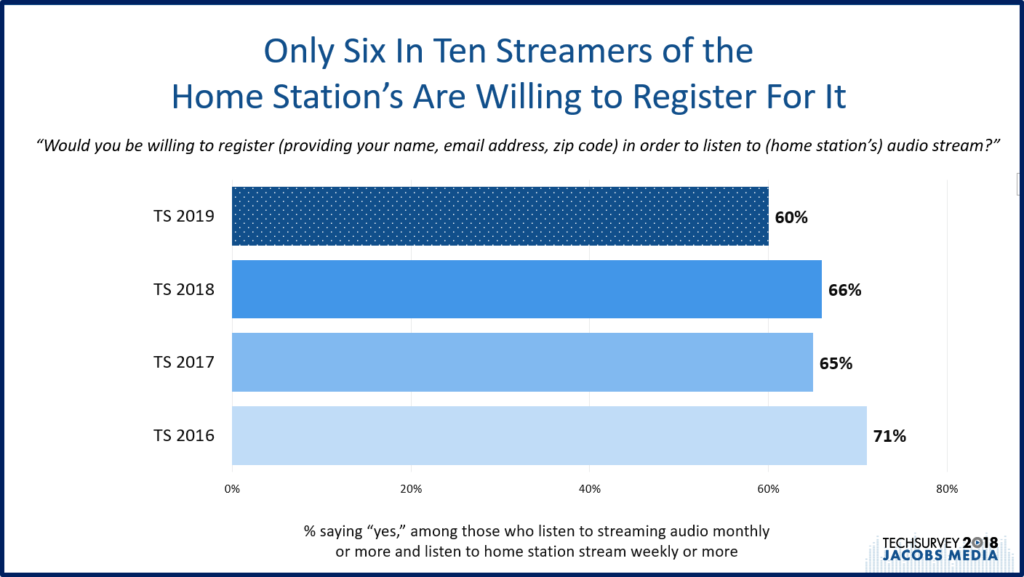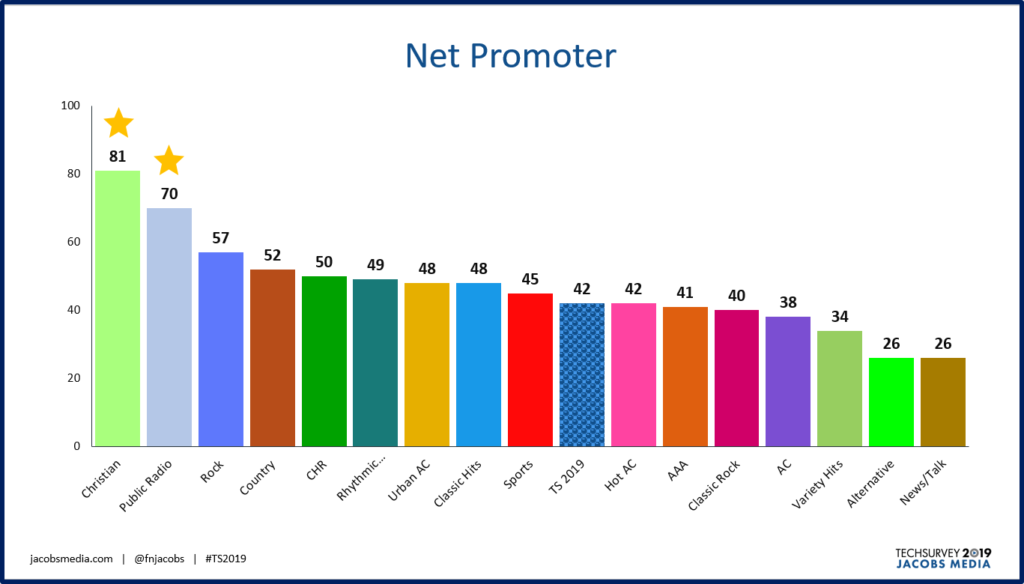
At CES earlier this year, AI – Artifical Intelligence – was a frequent topic of conversation. It was very much part of the demos we saw and that our radio tours experienced. Brand after brand, product after product, and innovation after innovation promised a baked-in AI to make our lives better.
But what is AI? Simply stated, it’s using the available data – where we’ve checked the “Terms & Conditions” box and hit “Submit” – to predict our behavior. And when it works, it can be very satisfying.
Amazon, Starbucks, Netflix, Walmart, and many other mega-brands use this information intelligently to produce personalized information that helps us become better shoppers. We are offered deals that are customized to our tastes, as well as recommendations for new products that reflect our past purchasing or even our browsing.
As we know, AI walks that line between being happily amazed at the intuitiveness of predictability to being creeped out by technology that virtually stalks us around the Internet – on Facebook, Google, email database and content marketing, websites, and other sources.
A recent story in Retail Dive by Dan O’Shea reports that more than nine in ten companies utilize a personalization strategy (yes, AI) report increased revenue.
A study, conducted by personalization software firm Monetate and WBR Research, interviewed 600 marketing execs here in North America and Europe from a variety of industry sectors. And among the findings, more than three-fourths of these companies with personalization strategies in place smashed through their revenue goals last year.
That ought to get the attention of broadcast radio execs everywhere, scraping for every ounce of revenue and developing non-traditional digital sources that can be easily monetized.
Retail Dive‘s O’Shea says a growing number of retailers have gotten the memo, upgrading loyalty programs in an attempt to better compete against the industry juggernaut, Amazon Prime. You have to wonder whether they can fight that fight against the world’s biggest retailer – online and otherwise.
Broadcast radio has the ability to develop and fine-tune personalization engines into their database marketing strategies. But how many are actually doing so?
When you consider many radio stations have substantial email lists (many believe 10% of the station’s cume is a respectable level), but do very little with this valuable resource. And there are growing indications inside our new Techsurvey that consumers are growing more leery about giving up more information, mostly due to privacy concerns.
We ask respondents who stream their favorite station’s website if they’d be willing to provide basic info (name, email address, zip code) in exchange for access to that stream. As you can see on the trended chart below, the percentage of those who say they’ll do so is decreasing:

In The Drum last week, Infutor’s CMO Dave Dague, pondered the question of data’s double-edged sword in an aptly titled opinion piece, “The give and get of consumer data.”
He asks the critical question:
“Are we giving consumers enough credit in their acknowledgement that there is a give and get in the world of consumer data?”
Dague suggests some of the key factors are:
- A brand’s good will and trust
- Transparency and trust with consumers around data collection
- Strong data protections
- Adherence to data and privacy protocols around the globe
But then there’s the big consumer question:
W.I.I.F.M. (or “What’s in it for me?”)
And as Dague points out, providing value to the consumer – in the case of radio, its listening audience – goes to the heart of the exchange.
He talks about the mutual understanding the company/advertiser will provide data protections, while the consumer will be connected with relevant deals and benefits personalized to their interests and needs.
That’s precisely where most radio station databases come up short. The deal often comes down to this:
“Sign up for our email database. In exchange, we’ll send you promotional materials about our programming and advertiser deals – all of which are not tailored to your likes.”
While receiving basic information in email blasts – concert information, presales, contest clues – still holds value for many consumers, Dague and others suggest it’s about “building brand equity and loyalty.”
But how many commercial radio stations are pulling off that trick?
Our Net Promoter scoring in Techsurvey suggests broadcasters might want to rethink the basic bargain they strike with audiences. As this year’s results show, commercial radio is mired in the low-40 range, while stations from the Christian and Public Radio sectors (starred on the left of the chart below) generate considerably more loyalty and word-of-mouth.

That level of trust is what motivates consumers to sign up for email databases, as well as share information about these stations to friends, family, and colleagues.
The “give and get” of data from radio is lopsided in favor of broadcasters. And in an environment where brands are increasingly using AI to establish more value to their consumers, radio companies need to rethink that W.I.I.F.M. question that more and more consumers ask before signing up for yet another email club.
Knowing a listeners’ favorite musical artists or news interests provides the type of personalized information that consumers increasingly appreciate.
When you’re planning that Coldplay concert ticket giveaway, being able to pull up hardcore fans of that band in the database for a meet and greet or similar promotion provides that personalized value listeners are seeking.
Similarly, the subset of listeners in the database who are especially interested in commuting conditions can have news about mass transit directed especially to them.

Then there’s the sales side. There’s value in identifying a couple hundred station database members in the market for a new vehicle in 2019. Or creating a data subset of those planning on getting married this year. Many radio broadcasters are test driving attribution companies, while some solutions are inside their hard drives.
But that means expertly digging into the database and developing smart strategies to deploy information wisely, rather than sending out “eblasts” to everybody. Or it involves diving back in to glean more information from existing e-club members, creating customized customer profiles. Broadcast radio need to proceed with caution, care, and consideration.
Dave Dague believes a data breach or a privacy screw-up can create considerable damage to the consumer-brand relationship. But so can sending out what he calls “continuous marketing garbage” that is tone-deaf to what listeners want out of the station relationship.
Data is, in fact, a double-edged sword for both consumers and brands.
Revenue generation and listener loyalty are the rewards. But distrust and alienation are the dark sides of data.
Using sharp objects requires skill, deftness, and touch.
Former Netscape CEO Jim Barksdale channeled me when he spoke this prescient line:
“If we have data, let’s look at data. If all we have are opinions, let’s go with mine.”
- Like A Pair Of Old Jeans - April 2, 2025
- What’s Fair Is Fair - April 1, 2025
- What’s On Your Bucket List? - March 31, 2025




Leave a Reply